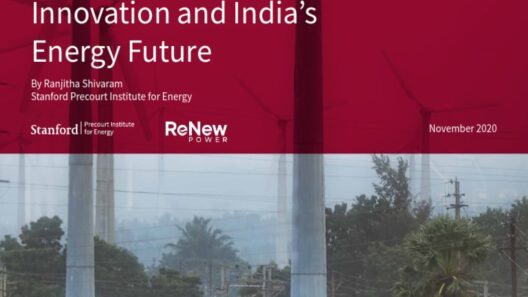Hibernation and estivation are two fundamental survival strategies employed by various organisms to endure extreme environmental conditions. While superficially similar as forms of dormancy, they exhibit distinct physiological adaptations corresponding to different ecological challenges. The nuances of these processes offer a remarkable insight into the persistent interplay between biology and climate, shedding light on how energy conservation is crucial for survival during adverse scenarios.
As the seasons transition, many species encounter fluctuating temperatures and varying resource availability, notably in the realms of food and water. Hibernation, typically associated with cold climates, allows animals to evade the harsh winter months when sustenance is scarce. On the other hand, estivation is primarily observed in creatures dwelling in arid regions, serving as a strategy to endure the sweltering heat and reduced moisture levels of summer. By entering a state of dormancy, these animals not only conserve energy but also extend their survival windows significantly.
The physiological mechanisms underpinning hibernation involve an intricate regulation of metabolism. During this state, metabolic rates plummet, often by as much as 90%, a process facilitated by a drop in body temperature. This reduction in metabolic rate is akin to entering a deep, reversible coma, where the organism requires minimal energy to sustain vital functions. Heart rate and respiratory rates decrease dramatically, further conserving energy reserves that would otherwise be spent throughout the winter months.
In addition to metabolism, hormonal changes play an essential role in hibernation. For instance, the secretion of hormones such as melatonin adjusts the sleep-wake cycle and promotes energy conservation, enhancing the organism’s ability to endure prolonged periods without food. This hormonal orchestration is crucial, as it primes the body for a significant reduction in thermogenic activity, reducing the energy expended on maintaining a stable internal temperature.
The concept of hibernation extends beyond just the animal kingdom. Various amphibians and reptiles employ similar strategies, utilizing external environmental cues to determine the appropriate time for dormancy. Notably, species such as the common frog enter a hibernative state, retreating into mud or submerged vegetation. This behavior is not merely survivalist; it reflects a sophisticated response to the threats posed by climate change, as habitats and seasonal patterns become less predictable, compelling these creatures to adapt their strategies for energy conservation.
Estivation, while sharing similarities with hibernation, largely deviates in its association with high temperatures and desiccation. Organisms that estivate, such as certain species of snails, amphibians, and even some reptiles, enter a state of dormancy when faced with extreme heat and water scarcity. This adaptation is an evolutionary marvel, allowing for a staggering reduction in metabolic activity, thereby conserving precious bodily fluids and energy. During estivation, these organisms often secrete a protective mucous layer to retain moisture, further illustrating the intricate adaptations developed through natural selection.
Understanding the implications of hibernation and estivation is particularly vital in the context of climate change. As global temperatures rise and weather patterns become increasingly erratic, the challenges faced by various species intensify. The capacity for certain animals to enter hibernation or estivation can determine their viability in changing ecosystems. For instance, amphibians that rely on moist habitats are increasingly threatened by drought conditions, and their ability to estivate may become the linchpin for their survival.
Moreover, the impact of climate change on hibernating mammals, such as bears and ground squirrels, may disrupt hibernation cycles. Increased temperatures can cause early arousal from hibernation, leading to a mismatch between metabolic demands and food availability upon awakening. This misalignment can result in increased mortality rates, perpetuating an adverse cycle within ecosystems. The fragility of these strategies in response to shifting environmental markers underscores an urgent call to consider the broader implications of climate resilience.
In the grand tapestry of life, hibernation and estivation serve as poignant reminders of nature’s capacity to innovate and adapt. The efficiencies gained from these energy-conserving strategies not only bolster individual species during periods of stress but also maintain ecological balance. As these organisms exercise their rights to repose through metabolic restraint, they subtly challenge our understanding of survival. Their existence compels us to rethink notions of resilience and resourcefulness, particularly in the face of anthropogenic climate change.
The ongoing inquiry into the mechanistic underpinnings of hibernation and estivation continues to reveal opportunities for scientific and ecological advancements. Unraveling the genetic and physiological sequences that facilitate these dormancy states could enlighten fields such as conservation biology, medicine, and evolutionary studies. The exploration of these dormant states operates in parallel to humanity’s quest for sustainable practices; understanding energy conservation in nature can inspire innovative approaches to resource management and ecological preservation, as the survival of various species hangs in the balance.
In summary, hibernation and estivation reflect profound strategies of energy conservation that resonate far beyond the individual organism. As climate change relentlessly reshapes ecosystems, the intricacies of these survival mechanisms not only enhance our appreciation of biodiversity but also pave pathways for potential solutions to the ecological challenges we face today. By fostering a deeper understanding of these remarkable adaptations, we can cultivate a more harmonious relationship with the natural world, ensuring that we pave the way for generations to come.








